|
Irene Carstairs is a historian based in Tirana, Albania. She runs “That History Nerd,” a history blog dedicated to dusting off the ephemera of history and bringing it to life. She is particularly interested in women, the middle ages, and women in the middle ages. You can find her work at www.thathistorynerd, and find her on twitter at @CarstairsIrene 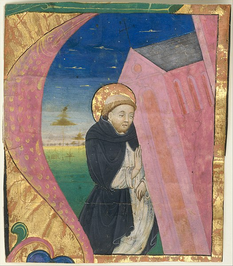 Of all the political superpowers of the Middle Ages, the Catholic Church reigned supreme. Despite having no standing army of its own, and occupying only a small portion of the Italian peninsula, the Church had immense control over Western Europe. People of the Middle Ages had a great concern for the fate of the soul after death, and as the gatekeepers to a non-hellfire and brimstone filled afterlife, the Catholic Church held more power than any individual king. However, getting and keeping power was difficult. In an era where military might was everything, a small country reliant on mercenaries and foreign friends wouldn’t stand for very long against any invading force. So, lacking swords, the Church turned to sin and penance to keep Europe in line. In the early centuries of Christianity what was and what wasn’t a sin was a bit unclear, and while there were definitely behaviours defined as sins in biblical teachings, more activities came to be sinful through later Church teachings. Most sexual behaviours became mortal sins that would damn the soul to an eternity of suffering if not repented of. The only way to repentance was through confession and doing penance, something that was only possible with a church official. In Medieval Catholic dogma, sex was strictly for procreation. Sex had be done in the most natural and godly way possible, and was only to take place within the bonds of marriage. Sex was prohibited on Wednesday, Friday, Saturday, Sunday, during Lent, Advent, Whitsun and Easter weeks, and on feast days. Sex was not allowed during daylight hours, or while the woman was menstruating, pregnant, nursing. Masturbation was a sin, as were “nocturnal emissions,” or wet dreams. Homosexual sex, adultery, bestiality, and incest, were regraded as the most serious sexual sins. Under these rules, sex was only acceptable about 50 days out of the year, less if the woman was pregnant. These rules would have been impossible to follow, and deviations from some of the stricter rules was heresy, a sin that occasionally ended in death. Less serious sins were forgiven through doing penance, but penance for sexual sin could be strict, consigning a person to bread and water on fast days for years, or exiling a person from their community entirely. By creating impossible standards and the accompanying punishment for failure, the Church set themselves up as the masters of a society that was wholly reliant and subject to them. 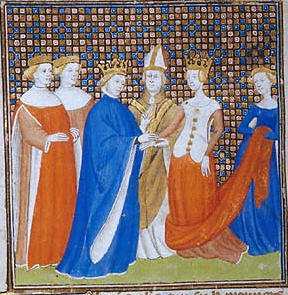 This society required a large population of believers. To gain these believers, the Church sent missionaries to pagan communities. However, large groups could be intractable, so the Catholic church broke up those large groups, partly through limiting the number of potential spouses to break up communities. In pagan communities, marriages were arranged to promote common interests. Adultery was unpopular, but permissible provided it was committed with a person in another community. Marriage outside the group was discouraged, because it meant a loss of people and resources. This created a close knit society who were accountable to each other. This was a problem. For the Church to be at the head of society, people needed to be individually accountable to the Church. Loyalty and accountability to the community interfered with that. For individual accountability, the Church had to break up community units. They did this by tightening consanguinity laws. Consanguinity laws during the Middle Ages were incredibly convoluted. There were two contradictory ways of determining consanguinity, making it difficult to calculate degrees of separation. Upon marriage both families became blood-family, exponentially increasing the amount of ineligible couples, and making it difficult to keep track of who was related to who, and exactly how related they were. Blood families had grown so vast that by 1215 consanguinity laws had to be relaxed because there was a scarcity of acceptable spouses. In a small community it would have been nearly impossible to find a partner who wasn’t a relative, forcing marriage outside the community. Since the community no longer existed, people were no longer accountable to it, nor did they have the social and spiritual support system a community provided. The Catholic Church eagerly stepped in to fill the void. However, Christian conversion did not come with total control. Kings with large armies were a major threat, and while the pope could order military action against a defiant monarch, he was reliant on other kings to carry out his orders. Because the Church had no trustworthy fighting force, they had to defeat an army from within. The heart of a medieval army was its knights. Close relationships between comrades, and legal bonds of ritual brotherhood were common, making knights especially dangerous to Church authorities because their loyalty was split between comrades, feudal lords, and god. Medieval warriors started their training young. Children of aristocrats were frequently fostered and trained with other young aristocrats. The shared risk and enforced teamwork, as well as later escapades at tournaments led to fierce loyalty, and until the mid 12th century, close relationships between warriors were the ideal of manliness. These close relationships between warrior men were frequently lawfully solemnised in the form of ritual brotherhood. As ritual brothers, two or more men became brothers in the eyes of the law, bound to protect each other in matters public and personal. If a ritual brother came out on the wrong side of a lawsuit, the other helped him pay the costs. If one ritual brother was captured, the other contributed to his ransom. While not all ritual brothers enjoyed a close and non-murderous relationship, many more enjoyed an emotional intimacy. The bond between ritual brothers was dangerous, because that bond could take precedence over fealty, as it did in the Battle of Bremule in 1119, and the Battle of Lincoln in 1217. If an angry liege with an army could be ignored in favour of loyalty to a brother, what was the Church? However, in Western Europe ritual brotherhood was a legal relationship, not a spiritual one as it was in Orthodoxy. Outright forbidding ritual brotherhood wouldn’t necessary put an end to the practice, so in order to break up close relationships between warriors, the Church used the suspicion of sodomy to drive men apart. 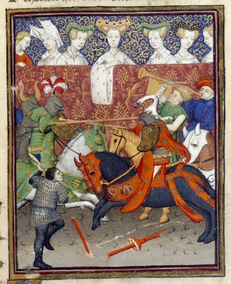 Sodomy was a grievous sin that could incur penances lasting for years, exile, or even death if the penitent was a repeat offender. The practice of ritual brotherhood was not explicitly sexual, although it has been argued to be an early form of gay marriage. While some relationships were strictly transactional, some ritual brothers were definitely romantically and sexually involved. Most notorious was Edward II of England, and his sworn brother Piers Gaveston, whose blatant favouritism and poor administration led to their demises. Less notorious are the two unnamed English squires who swore to assist each other in the case of imprisonment, share all their earthly wealth, and be loyal and faithful to each other in July of 1421. However, even ritual brothers who weren’t romantically or sexually involved were at risk of rumour, and rumours of untoward behaviour could be enough to order an inquisition. Inquisitions, as shown with the Templars in the 14th century, weren’t always as much about punishing wrongdoers as they were about removing obstacles. While there is no evidence of the Catholic Church taking disciplinary action against men who were ritual brothers, or who were close to their comrades, the penalties for sodomy became more and more severe, until it became a capital crime. Ritual brotherhood became more and more rare, and by the end of the Middle Ages, it had disappeared completely. With the ties of comradeship and ritual brotherhood weakened, knights and armies became less of a threat to Church authority. Because establishing intimacy with a comrade could result in death, armies, particularly army leadership, were less unified and more factious, making them susceptible to infighting and self sabotage. Even when outside entities were docile, the power of the church still faced challenge. Internal disagreements were common, and in addition to the usual decadent and conniving bishops and cardinals, there was also a host of sexual heretics living in monastic communities. While monasteries were supposed to be places of prayer, contemplation, and general holiness, monasteries were not as chaste as advertised. It wasn’t uncommon for monks to have lovers who were also monastics, and for these monks to confess their sexual misdeeds to their sexual partner. Sodomy was the most serious of all sexual heresies, especially among monastics. Monks were supposed to love god above all else, and any other love a monk might feel was for the sole purpose of loving and understanding god better. When loving, a monk was supposed to love naturally, and homosexual love was one of the loves deemed “unnatural” by the medieval church. Unnatural love posed a serious question about the nature of god. Man, after all, had been created in the image of god, and it was generally held that god was not gay. However, the idea that homosexuality was unnatural came from a dubious chapter in the Old Testament, and principles established by the Church. Monks, who loved each other openly, were some of the holiest members of the same Church that condemned them. If holy men didn’t view loving each other as unnatural, then would god have seen it as natural? God wasn’t a sodomite, and yet there were sodomites who had been created in his image. If there were sodomites created in the image of god, was god also a sodomite? It was a dangerous question that challenged Church doctrine and authority. In order to protect against unnatural love, monks were kept as isolated as possible within a cloistered community. At night, monks slept all together in a room lit by a candle. Monks were forced to sleep in their full habit, including their belts. Old monks were put next to young monks to ensure that no funny business happened in the night. Abbots were encouraged to cause strife between any monks who seemed too chummy. Monks who stood too close or talked for too long would find themselves separated by the abbot, and the target of vicious rumours. This isolation may have led to a holier monk who was better at praying and contemplating, but it also led to a community of men who wouldn’t be able to organise a unified opposition to Church power. Separating monks on the grounds of protecting their chastity gave the Church control within their monasteries, and kept a tight lid on sexual heresy. This is not to say that sexual heresy didn’t happen, it definitely did, but by keeping tight control over people’s sexual expression, the Church was able to isolate people, which made them even easier to control. By isolating pagans, knights, and monks the Catholic Church was able to destroy support systems, and replace it with dependence on the Church. With military and religious opposition quashed, the purposefully impossible sexual laws remained largely unchallenged until the Reformation. Because repentance was impossible without the Church, all Europeans, kings and serfs, were reliant on the Catholic Church for salvation, placing the Church at the very head of medieval society. McCann, Christine A. “Transgressing the Boundaries of Holiness: Sexual Deviance in the Early Medieval Penitential Handbooks of Ireland, England and France 500-1000.” Theses, 2010, 1–100. Bitel, Lisa. "Sex, Sin, and Celibacy in Early Christian Ireland." Proceedings of the Harvard Celtic Colloquium 7 (1987): 65-95. Robert Mills. "GENDER, SODOMY, FRIENDSHIP, AND THE MEDIEVAL ANCHORHOLD." Journal of Medieval Religious Cultures 36, no. 1 (2010): 1-27. BULLOUGH, VERN L. "Medieval Concepts of Adultery." Arthuriana 7, no. 4 (1997): 5-15. Greenberg, David F., and Marcia H. Bystryn. "Christian Intolerance of Homosexuality." American Journal of Sociology 88, no. 3 (1982): 515-48. BARBEZAT, MICHAEL D. "Bodies of Spirit and Bodies of Flesh: The Significance of the Sexual Practices Attributed to Heretics from the Eleventh to the Fourteenth Century." Journal of the History of Sexuality 25, no. 3 (2016): 387-419. BROWN, ELIZABETH A. R. "RITUAL BROTHERHOOD IN WESTERN MEDIEVAL EUROPE." Traditio 52 (1997): 357-81.
2 Comments
ryan
3/17/2020 05:21:04 pm
Wow. I already knew the catholic church did some shady stuff to get and maintain power, but this is flat out evil.
Reply
Jonathan
4/23/2020 04:13:03 pm
This is a great article. It’s heartbreaking to realize the damage the Catholic Church has done to Western society. Of course I knew that the negative perception of sex comes from Christianity, but I didn’t realize how strict it was. No wonder our culture has such a negative view of sex! And I knew that in the past it was very common that people lived in close-knit communities, and some still do, and it might be the ideal way of living. But I didn’t know the history of it in Europe and that the Catholic Church had pushed apart those pagan communities in order to become powerful.
Reply
Leave a Reply. |
Sex History ContentsIf you would like to submit an article, please fill out a submission on the Contact page Archives
September 2020
|
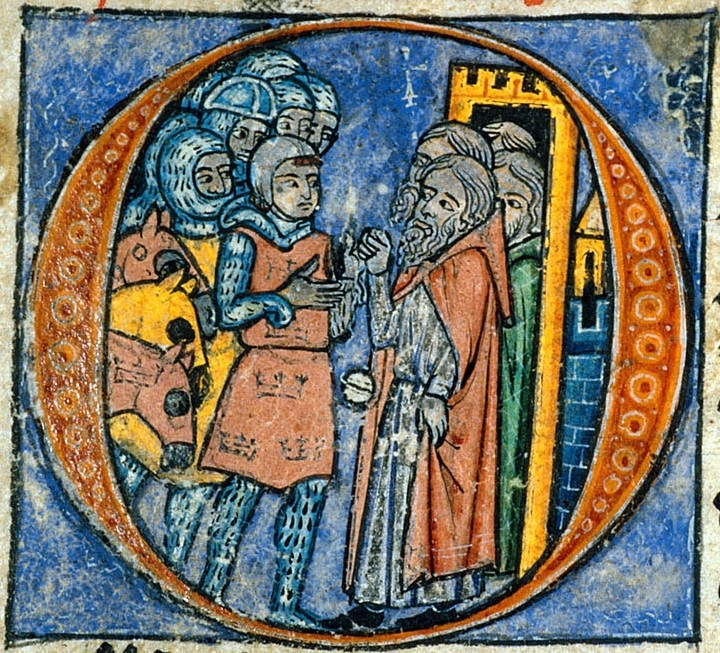
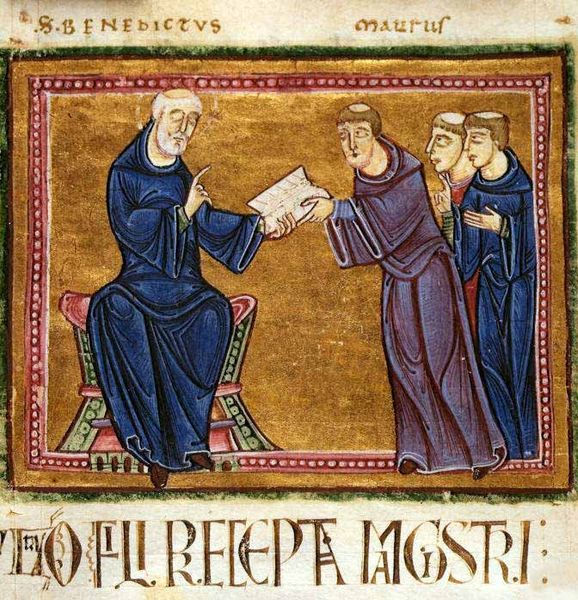
 RSS Feed
RSS Feed